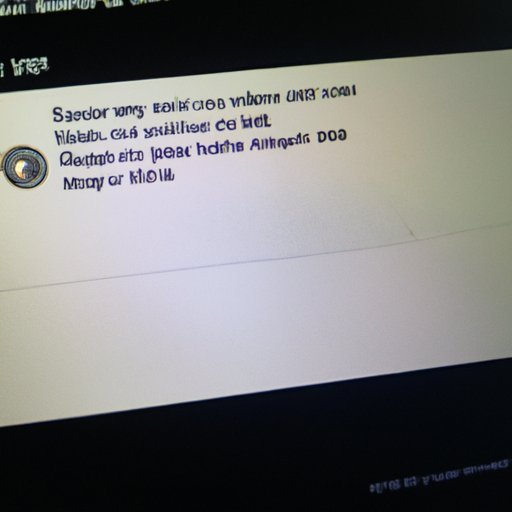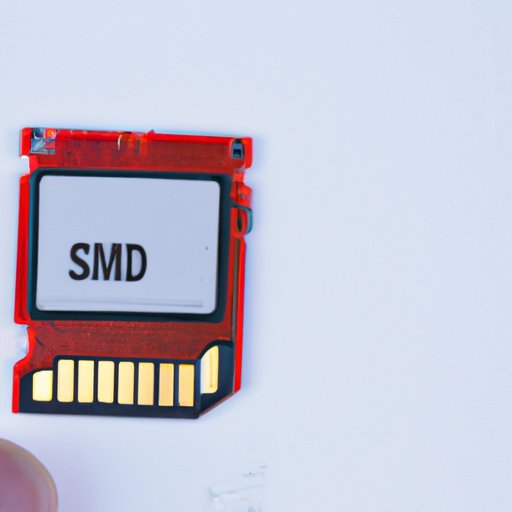Introduction
SD cards are one of the most popular and commonly used storage media today. They are small, portable, and often used in cameras, phones, and other digital devices. But while they are convenient, they can also be prone to errors and malfunctions. This is why it is important to periodically check the health of your SD card.

Run a Diagnostic Test on the SD Card
The first step in checking the health of your SD card is to run a diagnostic test. This will help you detect any errors or problems that might be present and give you an idea of the overall health of the card. Here’s how to do it:
How to Download and Use a Diagnostic Tool
The first step is to download a diagnostic tool. There are many different ones available online, so you’ll need to find one that works best for your particular device and operating system. Once you’ve downloaded the tool, simply follow the instructions to install it and then run the tests.
What Types of Tests Can Be Conducted
A diagnostic test will usually check the following things: read/write speeds, general performance, and error rates. The results of these tests will give you an indication of the overall health of the card.
What Results You Should Look for
When running a diagnostic test, you should look for any errors or anomalies in the results. If there are any red flags, it could indicate that there is something wrong with the card. In this case, it is best to replace the card as soon as possible.

Inspect the Physical Condition of the Card
In addition to running a diagnostic test, it is also important to inspect the physical condition of the card. Over time, dirt and dust can build up on the connectors, which can lead to problems. Here’s what you need to do:
Cleaning the Connectors
The first step is to use a soft cloth to gently clean the connectors. Make sure not to use anything abrasive or harsh as this could damage the card. Once the connectors are clean, reinsert the card into the device and see if it works properly.
Visually Checking for Damage
Next, take a close look at the card itself. If there are any scratches or dents, this could indicate that the card has been damaged. In this case, it is best to replace the card as soon as possible.
Check for Errors in the File System
Another way to check the health of your SD card is to check for errors in the file system. Here’s what you need to know:
Why File System Errors Occur
File system errors can occur for a variety of reasons. It could be due to a virus, poor power supply, or even a corrupt file. No matter the cause, it is important to fix these errors as soon as possible.
How to Fix Common File System Errors
Depending on the type of error, there are a few different ways to fix it. For example, if the error is due to a virus, you can use antivirus software to remove it. If the error is due to a corrupt file, you can use a data recovery tool to restore it. In either case, it is important to back up your data before attempting to fix any errors.

Use Disk Utility to Check for Bad Sectors
Bad sectors are areas on the disk that are no longer usable. While they can be caused by a variety of factors, such as age, improper formatting, or even physical damage, it is important to check for them regularly. Here’s how to do it:
What Are Bad Sectors?
Bad sectors are areas on the disk that have become corrupted or damaged. They can cause errors in the file system and make it difficult to access certain files. It is important to check for them regularly to ensure your data is safe.
How to Use Disk Utility to Check for Bad Sectors
The first step is to open the Disk Utility application on your computer. Then select the SD card from the list of drives and click on the “Scan” button. This will scan the disk for any bad sectors and report any errors found.
Test Read/Write Performance of the Card
Finally, you should also test the read/write performance of the card. This can help you determine if the card is functioning properly and if it is fast enough for your needs. Here’s what you need to know:
Using Benchmarking Tools
There are many different benchmarking tools available online. Simply download one of these tools and follow the instructions to run the tests. This will give you an indication of the read/write speed of the card.
Understanding the Results
When looking at the results of the benchmarking tests, look for any anomalies. If there are any significant differences between the expected and actual results, this could be an indication that there is something wrong with the card. In this case, it is best to replace the card.
Conclusion
Checking the health of your SD card is an important part of maintaining your device. By regularly running diagnostic tests, inspecting the physical condition of the card, checking for file system errors, using Disk Utility to check for bad sectors, and testing read/write performance, you can ensure your SD card is working properly and is free from errors.
(Note: Is this article not meeting your expectations? Do you have knowledge or insights to share? Unlock new opportunities and expand your reach by joining our authors team. Click Registration to join us and share your expertise with our readers.)
